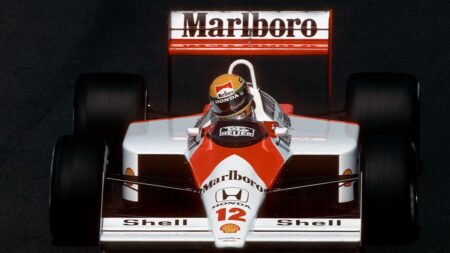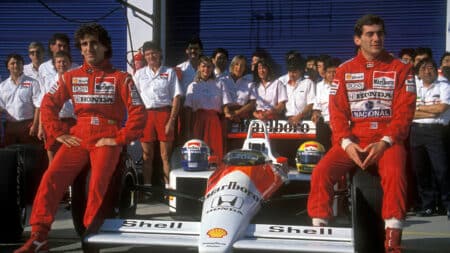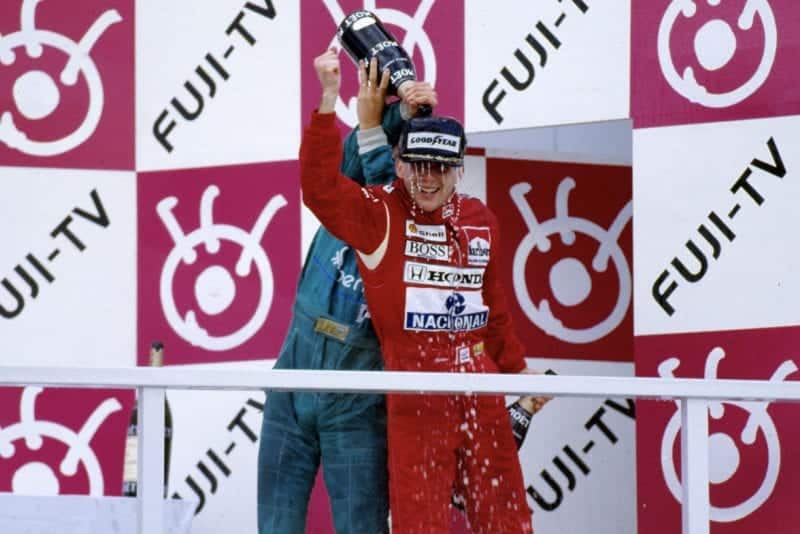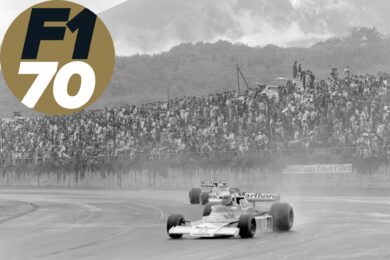The two would go at it hammer and tongs all year. By the time F1 fraternity touched down in Suzuka, Senna simply had to win and he was champion. By virtue of the “eleven best results” scoring system employed that year, Prost could only add three points to his total even if he won in Japan.
In qualifying, Senna maintained his imperious one-lap form of that year, besting the other McLaren by 0.3sec. The Brazilian had scored 13 poles that season, whilst Prost had two.
“Alain always accepted and never hid the fact that Ayrton on one lap on was absolutely unbelievably fast, with the way he managed to build up the engine revs in a corner” says Ramirez. “[Prost] tried to do the same but never managed.”
It was what happened on race day that really mattered though, and on Sundays the McLaren pair were much more closely matched.
“He didn’t tolerate the mistakes of the team and his mistakes he would tolerate even less.”
Senna lined up first on the grid with Prost alongside him, with the Ferrari of Gerhard Berger just behind in 3rd.
The poleman, as Murray Walker put it, had been “tight as a violin string” pre-race. This might just have contributed to what happened next.
As the lights went out, as rev-limiters hit their peak and Goodyear tyres squealed, most of the field got away well – apart from Senna.
The car juddered as the Brazilian suffered every racing driver’s nightmare. He’d stalled it.

Senna raises his arms in the air as drivers swarm around him, after stalling at Suzuka
Sutton Images
The onrushing field swarmed around him, with Berger just managing to swerve and avoid the polesitter. It was only the Austrian’s razor-sharp reactions that prevented a collision.
Luckily for Senna, the Suzuka pit straight is on a slope. As he waved his arms frantically in the air – to warn other oncoming drivers – his car began to roll down the hill.
The Brazilian somehow kept his composure and managed to bump start the car. It seemed to take a couple of goes, but the McLaren eventually managed to haul itself away from the grid and get up to speed with the pack.
After this apparent disaster Senna was 14th, with Prost first.
James Hunt, in his television commentary at the time, proclaimed proceedings had “absolutely put the race into Prost’s lap.” Was it all over? Not if Senna had a say on the matter.
The fightback began immediately, as he got past Eddie Cheever, Maurizio Gugelmin, Nelson Piquet, Phillipe Streiff, Jonathan Palmer, Riccardo Patrese and Andrea de Cesaris – on the first lap alone.
Even by his usual intense standards, the Brazilian was driving like a man possessed.
As he crossed the line to finish lap one, Senna had managed to bring the car up to eighth.
“Ayrton admitted it [stalling] was his mistake.” Ramirez notes, “Perhaps it gave him that spark, that extra performance on the day.
“He was a guy that didn’t tolerate the mistakes of the team and his mistakes he would tolerate even less.”
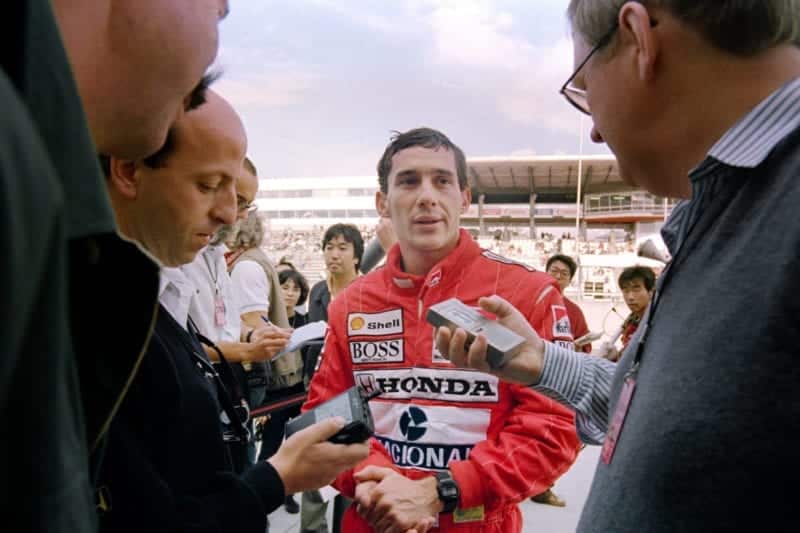
Senna cut a nervous figure ahead of the race
Getty Images
There’d been spots of rain just prior to the race start and these returned on the opening laps. As a known master in the wet, it played to Senna’s advantage.
He had further help from Nigel Mansell who, in his eagerness to make first lap progression, had speared his Williams into the back of Derek Warwick‘s Arrows. Both had to pit, with Senna benefiting once more.
Next up was the Williams of Patrese and Alessandro Nannini’s Benetton. Both were quickly disposed of and by lap two, Senna was now in sixth position.
The Benetton of Thierry Boutsen fell on lap three, Michele Alboreto’s Ferrari at the final chicane a lap later. Even with his superior car, Senna seemed to have reached a higher, previously unseen level of driver performance.

Senna running fourth, ahead of Alboreto’s Ferrari and the two Benettons
Getty Images
Berger’s Ferrari proved a trickier proposition. On lap one he had hustled Prost for the lead, but the fuel consumption problems which had plagued the Scuderia all season were coming into play once again.
Although Berger had dropped back to third, he still kept Senna behind for five laps before eventually falling prey to the McLaren.



